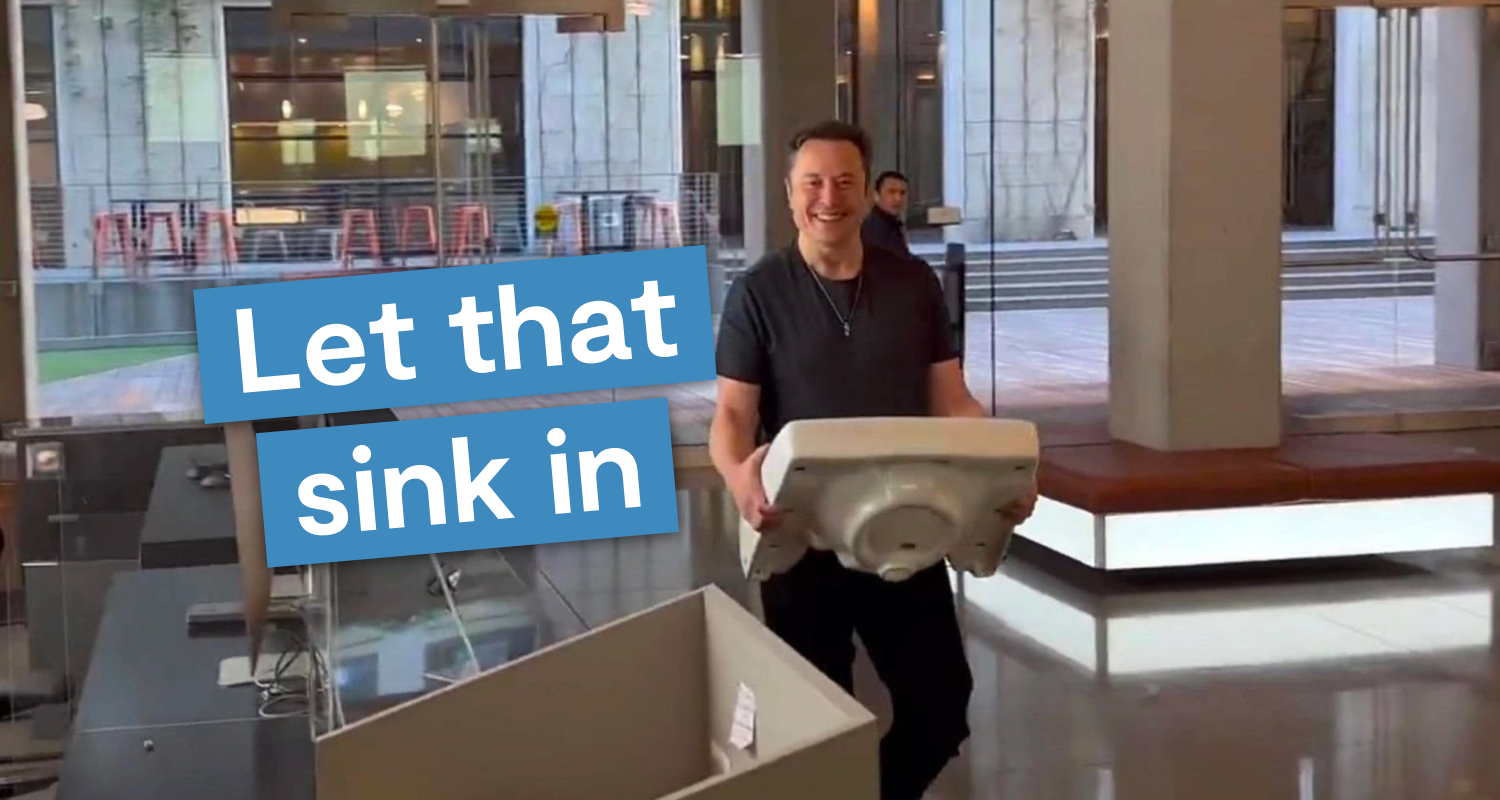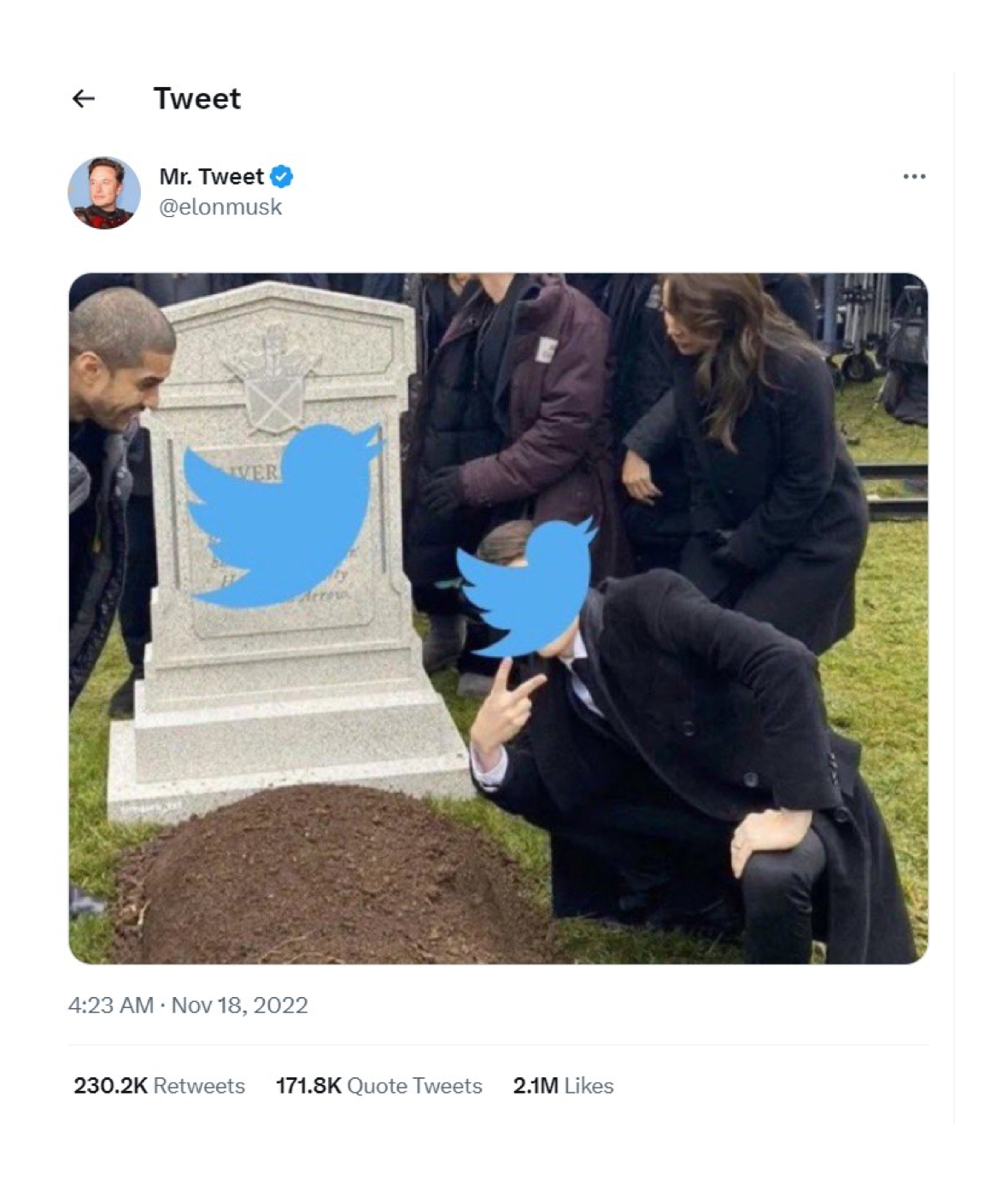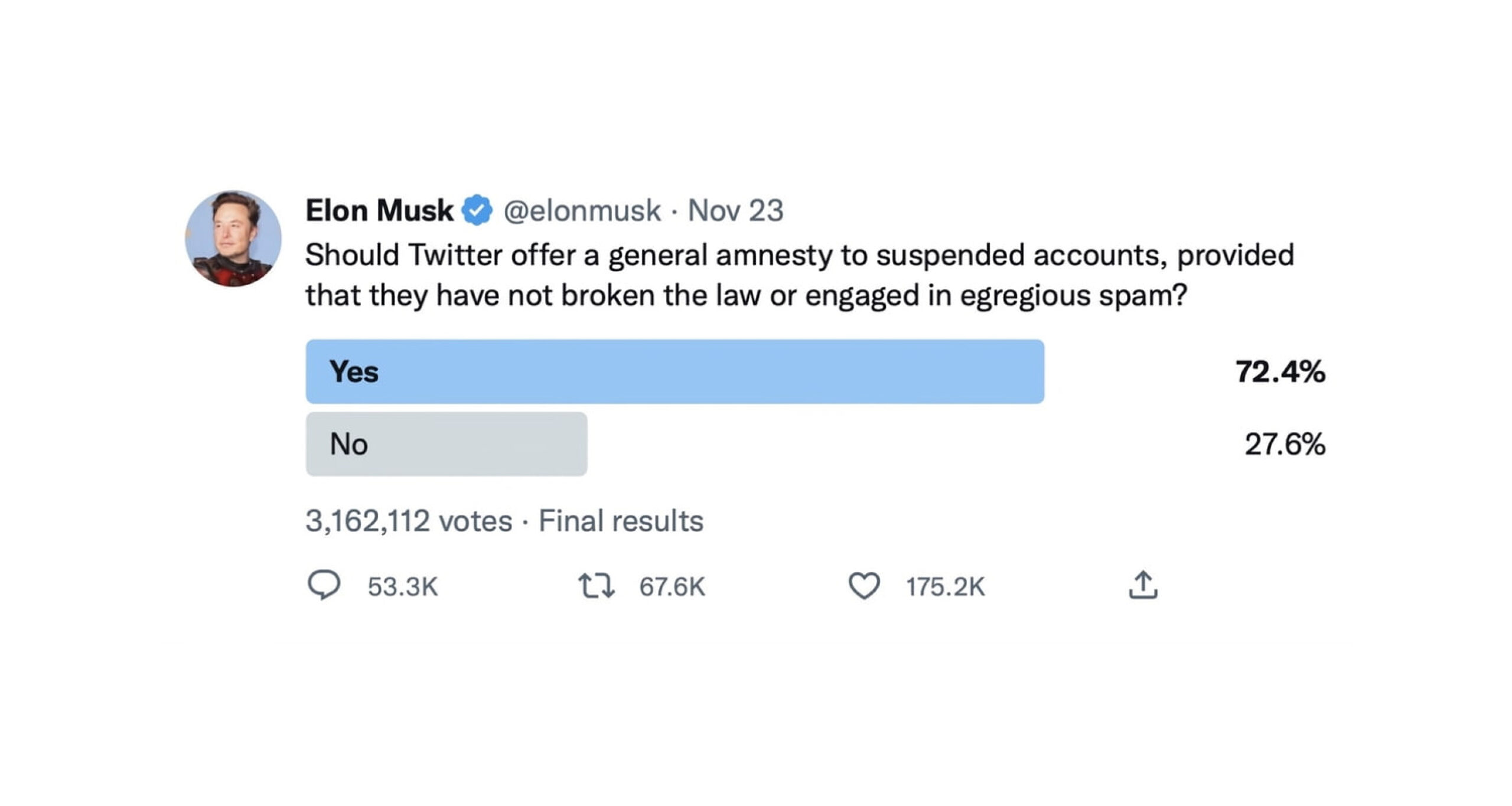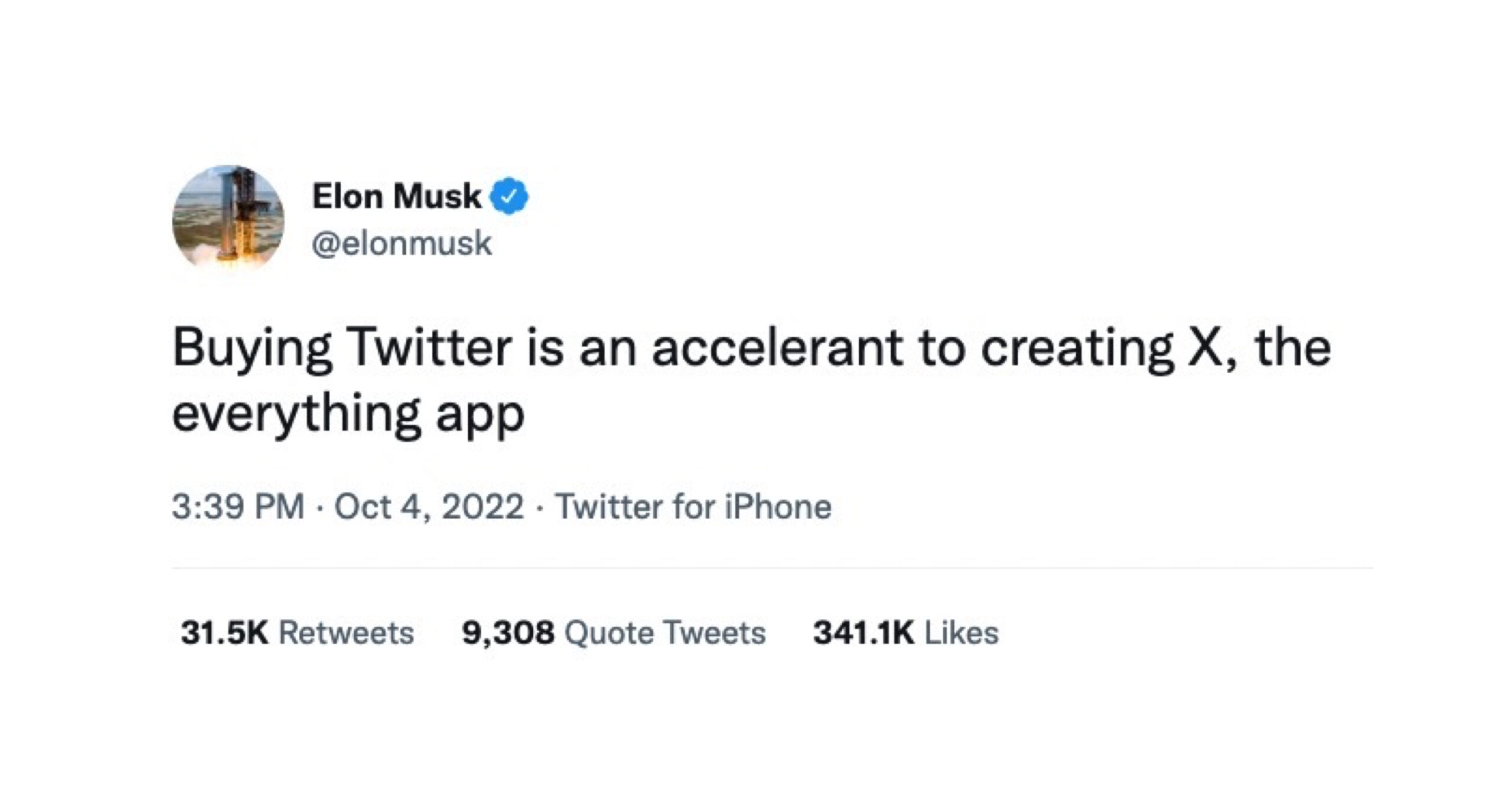It has been just over 80 days since tech tycoon Elon Musk took over as CEO of Twitter, and his tenure so far has been anything but quiet. Twitter has featured heavily in the news in the past few months, with Musk slashing jobs, unbanning suspended Twitter accounts, and upsetting big-spending advertisers. It was a chaotic end to 2022 for the social media website to say the least. What exactly is going on with Twitter and what can we expect to happen in 2023?

The story so far
Elon Musk walked into Twitter headquarters on the 27th of October carrying a sink (an ode to the classic ‘let that sink in’ meme), to announce his takeover of the social media network after a long process of purchasing the company from the previous CEO, Jack Dorsey. With the change in leadership, and with a character like Elon Musk at the reins, it would be silly to think big changes weren’t going to be on the horizon for Twitter. But I don’t think anyone could have predicted what was in store in such a short space of time!
Shortly after the takeover, Elon Musk announced a major layoff of thousands of employees, and a wave of resignations with many opting to leave after he brought in a ‘loyalty oath’, demanding employees to work “long hours at a high intensity”. #RIPTwitter and Mastodon (an open-source platform widely regarded as the next Twitter), were both trending topics on the platform shortly after. Not a great start to your new role, Elon! In typical Musk fashion, the tech tycoon added his two pence to the drama by posting memes mocking the demise of the platform. Sounds bad, right? Wait, it gets worse.

Musk also began a controversial policy change by allowing suspended Twitter accounts to be reinstated, decided by the ever-democratic, and a Musk favourite, the Twitter poll. Asking the public “Should Twitter offer a general amnesty to suspended accounts, provided that they have not broken the law or engaged in egregious spam?” Unsurprisingly, 72.4% of over 3 million users voted yes, resulting in likes of Donald Trump, Andrew Tate, Jordan Peterson, and other users previously banned for various offences, getting reinstated. Leaving lots of room on the website for unsavoury behaviour.
But what about adding new and useful features, to enhance the user experience on such a popular social platform? Musk’s idea is Twitter Blue, a monthly subscription service. For just £11 per month, users can display a verification badge of honour in the form of a bluetick on their account (without having to show any actual identity verification) and have access to exclusive features to enhance and customise their Twitter experience. The first release of the subscription service could not have gone worse, as users paid the fee to create fake accounts and imitate brands and high-profile figures, with Twitter descending into chaos shortly after. Twitter then suspended the subscription service whilst it dealt with the consequences, and has since relaunched as of early December.
Twitter may seem like a sitcom of a social media app at the moment to the general public, and Musk’s actions have news outlets gripped while they wait and see what he will do next. But if there’s one group that isn’t caught up in the Musk madness, it’s advertisers and businesses, who spend big money on his platform, or at least they did.

How has the business world reacted?
Musk, famously, does spend money on advertising for his own companies and products, such as Tesla. But not all companies can rely on their CEOs for self-promotion. Many large corporations spend lots of money on advertising, particularly on Twitter where they can reach a large and diverse audience. But marketers are now re-evaluating the platform after the changes brought in by Musk. Companies have reduced their spending on Twitter, and a large number of companies went a step further and halted spending on the platform completely, such as Mondelez, Audi, General Mills, and Kellogg. According to research firm Pathmatics, around 70% of Twitter’s top 100 advertisers were not spending money on the platform as of mid-December. Considering that this happened at the time of year when advertisers normally like to increase their advertising spend, in the lead-up to the holiday season, and during an international sporting event like the World Cup no less, speaks volumes. The retailer Macy’s even paused all of its Twitter advertising in the run-up to Thanksgiving, a day that is closely tied with the Macy’s brand due to its involvement in the Thanksgiving Parade.
Brands can no longer take the risk of advertising on a platform associated with unpredictability and an erratic CEO. Instead, putting their ad spend on platforms such as TikTok and Instagram, while they wait with bated breath to see where Twitter goes next. This leaves Elon looking for other ways to bring in revenue from different avenues, as Twitter relies on advertising for nearly 90% of its revenue. It’s clear that Twitter needs brands more than brands need Twitter.
What will Elon do next?
Musk’s behaviour makes it increasingly difficult to foresee what Twitter might look like in 2023 for businesses and marketers. What we do know is that Musk recently lifted a restriction on political advertising that had been in place on the app by then-CEO Jack Dorsey in 2019 to stop the spread of misinformation. This puts Twitter on a level-playing field along with YouTube and Facebook which both allow political ads and could be another source of revenue for the company. Twitter Blue has been slowly getting into shape, after its initial roll-out back in November. The main USP continues to be the blue tick verification, however, Twitter has since introduced features such as longer video formats, as part of Musk’s plan to introduce more video content on the app and possibly as a future avenue for monetization. Another feature for Twitter Blue subscribers is priority ranking in conversations. The jury is still out on this feature as it remains to be seen how this will impact Twitter usage and what ‘priority’ actually means to users. Nevertheless, it will be interesting to see how Twitter Blue will play out this year.
Away from the subscription service, it’s no secret of Musk’s desire to create a ‘super app’, similar to that of WeChat in China. WeChat is an app that dominates China’s social media scene and is used by more than a billion (yes billion!!) people. Essentially, it’s an everything app. It’s used for messaging, shopping, banking, transport, news, gambling, the list goes on. Musk has made repeated claims that his acquisition of Twitter would play a big part in the creation of the next ‘everything app’, and although there are a lot of regulatory hoops and data obstacles in the way to pursue such an app, there’s no doubt in his ambition to make it happen.

On a user experience level, Twitter has recently introduced additional view count displays on tweets. Previously, users could only publicly see the number of likes and retweets, however you can now see the number of views each tweet has received. Musk has implied that this feature’s purpose is to show just ‘how alive’ the platform is, and it’s a move that interestingly contrasts the direction of rival social media networks such as Instagram and Facebook, who have let users hide the number of likes on posts. More recently, Twitter has rolled out a new Tik-Tok style, ‘For You’ timeline, alongside a ‘following’ feed. Now when you first open the app you’ll see the For You tab first, meaning trending topics and recommendations will make up your new homepage. If you want to see content from people you are following, you’ll need to click over to the Following tab. This is part of what Musk calls ‘a UI overhaul.’ As per Elon’s tweets we can also expect the following updates in the coming weeks: bookmarking (a feature now available as of January 20th), improving in-app search options and updated character limits (RIP 280 characters), and it’s only January!
It’s difficult to picture a world where Twitter would be run peacefully after the Musk takeover, and even more difficult to predict what Musk will do next. Will he seek to repair his relationship with advertisers? Create the super app of his dreams? Maybe even leave the platform altogether, if the results of his Twitter poll last month are anything to go by? Truthfully nobody knows what’s next for Twitter, but when you pay £34 billion for an app you can try and do whatever you want with it.




